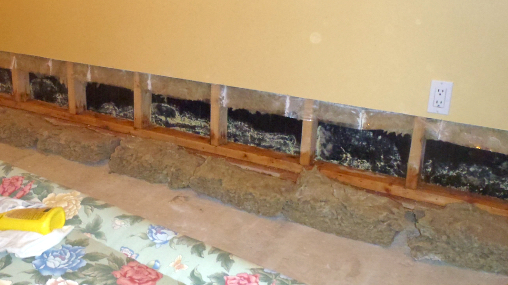So here is the big question. Should you use roofing felt (tar paper) when finishing your basement.
Well this has been a common practice for many years, but here are a few things that you need to know:
- Roofing felt was originally developed to dry in the house after framing, but before the roofing surface was installed. It is actually “water resistant”, not “waterproof”. This means that it will shed some water, however if the roofing felt is right next to a source of moisture (e.g. the foundation wall) it will actually absorb water.
- Roofing felt is a great substrate to support mould growth. Nearly every time we have done a deconstruction in a basement where roofing felt was used, we have found mould growth on the felt.
- Building inspectors would commonly recommend putting roofing felt (or tar paper) up against a foundation wall before refinishing the inside. Our experience has shown that this is a definite no-no.
- In addition to the roofing felt, renovators or contractors would install a vapour barrier on the warm side of the house in the basement. This created a dead air pocket inside the basement exterior walls, which did not allow water vapour emitted by the walls and floor to be evaporated, further increasing the risk of mould growth.

How Does Mould Growth Happen In A Situation Like This?
Well, mould is an opportunistic member of the fungal family and it absolutely loves tar paper, for a couple of very good reasons. Both the paper and the asphalt used to make it water resistant are carbon-based.
Add water and some mould spores and you have a picnic occurring in behind your walls.
If you believe you might have tar paper installed against your basement walls and you want some guidance on how to deal with the risk, contact MouldMedic today.
